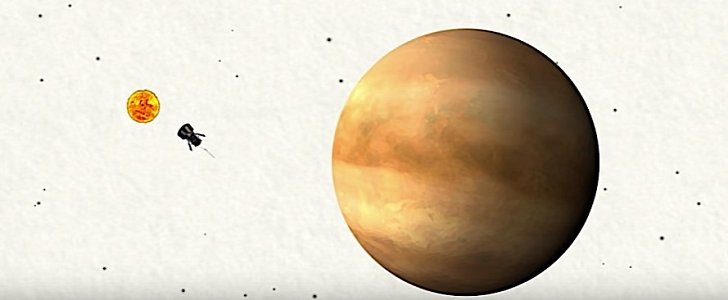About a week has passed since NASA launched a historic multi-year mission to study our solar system’s Sun, and according to the agency’s engineers, so fat everything goes as planned.
The tasks planned for this first week seem to have been completed without a hitch. NASA says the spacecraft’s high-gain antenna, which will be used to communicate with Earth, was released from locks. Parker is also currently using thrusters to remove momentum.
Parker Solar probe is equipped with four instrument suites meant to help it accomplish its mission. Since this week and over the following months, they will all have to be powered up and readied for work.
NASA already activated the part of the FIELDS instruments on August 13 and await their deployment 30 days into the mission. FIELDS will be followed by the activation of the magnetometer boom and other instruments.
“Parker Solar Probe is operating as designed, and we are progressing through our commissioning activities,” said in a statement Project Manager Andy Driesman.
“The team - which is monitoring the spacecraft 24 hours a day, seven days a week — is observing nominal data from the systems as we bring them online and prepare Parker Solar Probe for its upcoming initial Venus gravity assist.”
Parker Solar Probe is using gravitational assist to change speed and course because of orbital mechanics. Since any spacecraft that launches from Earth is affected by the planet’s lateral motion, the spacecraft could not have been launched straight at the Sun.
As it spins around the sun, Earth is traveling at about 67,000 miles per hour (107,800 km/h), almost entirely sideways relative to the Sun, causing anything shot straight at the sun to miss it by possibly millions of miles.
To cancel the lateral motion it inherits from the home planet, NASA launched the Parker Solar Probe on a flyby route towards Venus. The neighboring planet will act as a brake of sorts, providing gravity assist in accelerating the probe forward and decelerating it laterally.
Parker Solar probe is equipped with four instrument suites meant to help it accomplish its mission. Since this week and over the following months, they will all have to be powered up and readied for work.
NASA already activated the part of the FIELDS instruments on August 13 and await their deployment 30 days into the mission. FIELDS will be followed by the activation of the magnetometer boom and other instruments.
“Parker Solar Probe is operating as designed, and we are progressing through our commissioning activities,” said in a statement Project Manager Andy Driesman.
“The team - which is monitoring the spacecraft 24 hours a day, seven days a week — is observing nominal data from the systems as we bring them online and prepare Parker Solar Probe for its upcoming initial Venus gravity assist.”
Parker Solar Probe is using gravitational assist to change speed and course because of orbital mechanics. Since any spacecraft that launches from Earth is affected by the planet’s lateral motion, the spacecraft could not have been launched straight at the Sun.
As it spins around the sun, Earth is traveling at about 67,000 miles per hour (107,800 km/h), almost entirely sideways relative to the Sun, causing anything shot straight at the sun to miss it by possibly millions of miles.
To cancel the lateral motion it inherits from the home planet, NASA launched the Parker Solar Probe on a flyby route towards Venus. The neighboring planet will act as a brake of sorts, providing gravity assist in accelerating the probe forward and decelerating it laterally.

